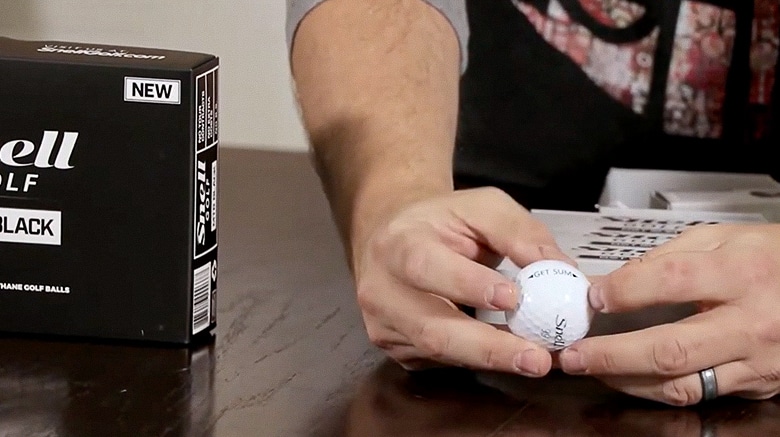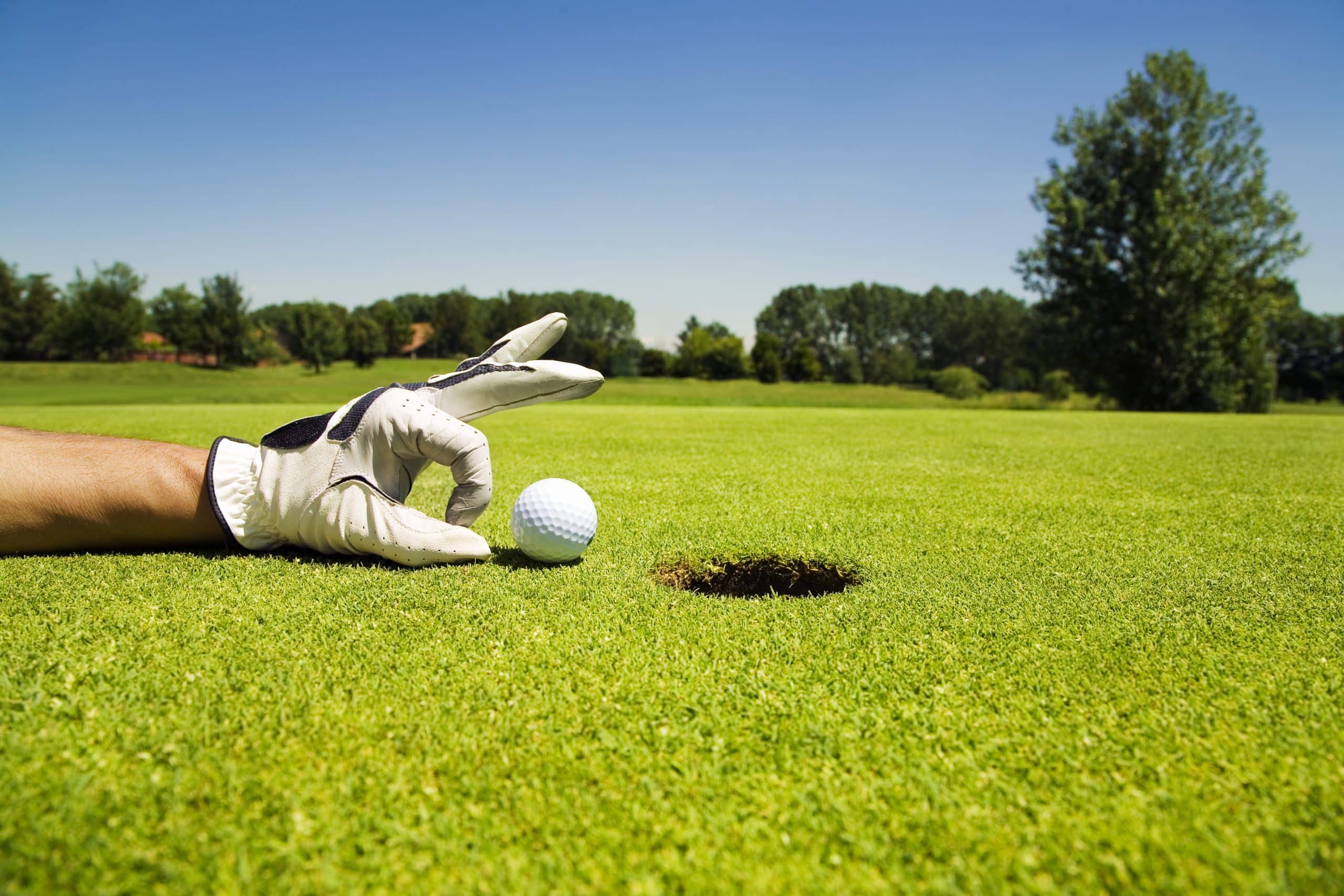Your golf ball choice can dramatically impact your game, but it's all about matching construction to your swing speed and style. If you swing under 85 mph, you'll want low-compression balls (30-70 rating) for maximum distance, while faster swingers above 100 mph need high-compression options (90-110+) for better control. Beginners should stick with durable two-piece balls, intermediates benefit from three-piece designs, and advanced players need multi-layer urethane covers for spin control—and there's much more to enhance your selection.
Discover the best golf balls for all skill levels. Boost your game with top-performing, distance, and control-focused golf balls today!
The construction of a golf ball might seem simple from the outside, but there's actually a fascinating world of engineering happening beneath that dimpled surface! You've got single-piece balls that're basically solid rubber chunks—think driving range quality. Two-piece balls step things up with a high-energy core wrapped in tough Surlyn, perfect if you're battling slices since they reduce spin. Here's where it gets interesting: multi-layer balls pack 3-5 distinct layers, each with different hardness levels. The outer urethane cover might be just 0.015 inches thin, but it creates serious greenside spin when paired with firmer inner layers. Advanced designs even incorporate titanium-infused cores! The key is hardness contrast—greater differences between layers mean more spin potential and shot control. Five-layer designs deliver decoupled performance that optimizes both driver distance and wedge spin control simultaneously. Popular models like the Titleist Pro V1 showcase how premium multi-layer construction can enhance both distance and precision for skilled players. Interestingly, wound golf balls feature rubber thread wrapped around a core, providing excellent spin characteristics but sacrificing some distance and durability compared to modern designs.

Now that you understand how layers work together, there's another critical factor that'll make or break your game: compression ratings. Think of compression as how much your ball squishes on impact—it's measured from 30 (super soft) to 120 (rock hard). The key point is: your swing speed determines which compression works best for you.
If you swing under 85 mph, you'll want low compression balls (30-70) because they deform more, creating a trampoline effect that enhances distance. Swing faster than 90 mph? You'll benefit from higher compression (80-110+) since these firmer balls transfer energy more efficiently with powerful swings. Your swing speed also directly affects how far you'll hit each club in your bag, making it crucial to understand this relationship for optimal ball selection. Despite the common myth, high compression balls can also perform well for slower swing speeds. Lower compression balls also generate more spin for better control around the greens. Choose wrong, and you're leaving yards on the table!
Before you buy your next sleeve of golf balls, you'll face golf's biggest equipment dilemma: distance versus control. Distance balls prioritize maximum carry and roll through lower spin rates, giving you those satisfying long drives but sacrificing finesse around greens. Control balls work the opposite way—they create higher spin rates that help you shape shots and stick approach shots close to the pin.
Here's the thing: your choice depends on your game style. If you hit consistently straight shots and want maximum yardage, distance balls like the Titleist Pro V1x deliver. Need precision for tight courses with small greens? Control balls reduce dispersion and give you that stopping power. Your ball choice becomes especially critical for short-range shots where wedge selection and spin work together to provide the quick stopping power needed around the green. Consider the course layout when making your decision, as windy conditions typically favor lower spin rates while tight courses benefit from higher spin control. Remember, even PGA Tour pros average 34 feet from the pin on approach shots, so perfection isn't realistic for anyone!
Understanding how spin affects your shots gets more complex when you realize every club in your bag creates different types of rotation on the ball. Your driver produces the least backspin, maximizing distance by reducing air resistance. Meanwhile, your wedges generate the most backspin – that's what creates those satisfying shots that bite and stop near the pin!
Here's the thing: backspin from high-lofted clubs gives you higher trajectories and steeper descent angles, perfect for aggressive approaches. But sidespin? That's your enemy for accuracy. Right sidespin curves the ball right, left sidespin curves it left. Golf balls with urethane covers amplify this spin effect, while harder covers reduce it. Your swing speed and angle of attack directly control these spin rates, so consistency matters. Achieving center contact on the clubface not only optimizes power transfer but also reduces unwanted sidespin that can send your ball off target. The dimple pattern on your golf ball significantly influences aerodynamics and spin control by affecting lift and drag forces during flight. To maximize your short game performance, maintaining fresh grooves on your wedges ensures consistent spin generation and better control around the greens.

When you're staring at golf ball prices that range from $15 to $60 per dozen, you don't need to break the bank to play decent golf. Budget balls often cost half the price of premium options while providing solid performance for most amateur players. The important point is—if you're shooting 80+, you'll benefit more from affordable balls that emphasize distance and forgiveness rather than premium spin control.
Consider the PXG Xtreme with its soft urethane cover and 3-piece construction, or the Titleist TruFeel's two-piece design that offers surprisingly good greenside spin. The Noodle Long & Soft remains a top choice for high handicappers seeking distance and soft feel. These budget options use durable ionomer covers and engineered dimple patterns that rival expensive balls off the tee! Recent testing shows that when comparing nine golf balls across premium and budget categories, performance differences were surprisingly minimal for mid-handicap players. For golfers with slower swing speeds, 2-piece balls provide the straightest shots and most distance while keeping costs manageable. Just like choosing golf equipment requires understanding your swing mechanics to maximize performance, selecting the right ball involves matching your playing style with the appropriate construction and price point.
Your swing speed acts like a fingerprint—it's unique to you and determines which golf ball will actually help your game instead of hurting it. Here's the breakdown: if you're swinging under 85 mph, you'll want a low-compression ball (around 70-80) that compresses easily and optimizes distance. Think softer feels better! Between 85-100 mph puts you in the sweet spot for medium compression balls (80-90), while speeds above 100 mph demand high-compression options (90-110+) that won't balloon on you.
The construction matters too. Slower swingers benefit from 3-piece balls that are easier to compress, while faster players should grab 4-5 piece balls for better control and spin management around the greens. Just as shaft flex options must match your swing characteristics for optimal performance, ball selection requires the same precision matching. Research shows that consistent striking of the ball significantly enhances driving efficiency and overall performance, making the right ball choice even more critical for your game.
Finding the perfect golf ball doesn't have to feel like searching for a needle in a haystack—it's all about knowing which category you fall into and what your game actually needs.
Beginners should stick with two-piece balls featuring lower compression ratings and harder covers. These durable options enhance distance while surviving those inevitable mishits—think basic models that prioritize consistency over fancy spin control.
Intermediate players benefit from three-piece balls with mid-compression designs. The Srixon Q-Star Tour exemplifies this category, offering urethane cover performance for moderate swing speeds between 85-105 mph.
Advanced golfers need multi-layer balls with soft urethane covers for optimal control. Higher compression options like Bridgestone Tour B X series complement fast swing speeds exceeding 105 mph.
High-handicappers should choose low-spin, two-piece balls that reduce slices and hooks while emphasizing cost-effectiveness and durability. For players who frequently lose balls during play, used golf balls offer an excellent cost-effective alternative that can deliver comparable performance to new balls when purchased from trusted sources.

You should replace your golf ball every 3-6 holes if you're playing competitively, but as a recreational player, you can keep using the same ball until it's lost or visibly damaged. Pro golfers change balls frequently because they're sensitive to minor imperfections affecting spin and control. For most amateurs, modern balls last multiple rounds without performance loss, so focus on deep scratches or cracks that actually impact your shots.
Weather dramatically affects your golf ball's performance. Cold temperatures can cost you two yards per 10-degree drop because they increase air density and reduce ball compression. Heat does the opposite, giving you extra distance. Humidity barely matters despite common myths—it actually helps slightly by making air lighter. Wind's your biggest challenge, completely altering flight paths and requiring major adjustments.
Dimple patterns dramatically affect your golf ball's performance. You'll see a smooth ball fly only half the distance of a dimpled one due to increased drag and reduced lift. Different dimple designs influence spin rates, path, and accuracy—intricate patterns enhance spin for control, while simpler designs optimize distance. Some specialized patterns even reduce hooks and slices by 75%!
Yes, you should definitely use different balls for practice versus tournaments. Practice balls work great for range sessions since they're cheaper and more durable, but they'll give you slightly shorter distances due to heavier cores. Save your premium multi-layer balls for tournament play—they'll give you better spin control, consistent performance, and maximum distance when it really counts!
Use the ball washers at tee boxes whenever possible—they're designed specifically for this job. If there's no washer available, grab your golf towel and wipe off dirt and mud, then dry the ball completely. Clean your ball after every few holes, especially on wet courses. The key point is: dirty dimples mess with aerodynamics and hurt your distance and accuracy greatly.
You've got all the knowledge you need to pick the perfect golf ball for your game. Remember, there's no single "best" ball – only what works best for you! Start by matching your swing speed to compression, then decide if you want distance or control. Don't overthink it though. Grab a sleeve of balls that fit your budget and swing speed, then get out there and test them.